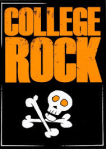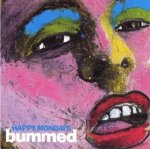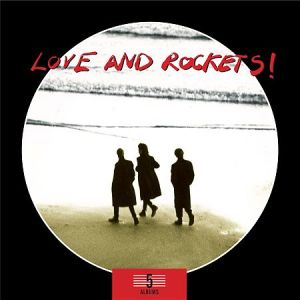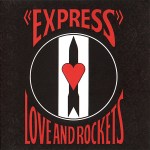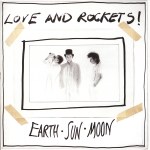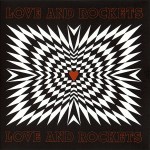I’ve been putting this off for years, and I think it’s high time: let’s take an extended look at the music that I listened to in my five years while living in Boston, from September 1989 to August 1995. That’s five years’ worth of music, so this one’s going to take quite a lot of time. Which is fine, because I’ve been wanting to revisit a lot of these!
Some of these albums will have good memories tied to them. Some of them won’t. Some of them will just be background soundtracks while others will have deep personal meaning. It was five rollercoaster years of good and bad, and I think it’s high time I made peace with them.
I started Emerson College in the fall of 1989, living on the third floor (room 306) of Charlesgate, the tall former hotel that sits on the corner of Beacon and Charlesgate East, just a few blocks east of Kenmore Square. This was back when the school’s campus — such as it was — was situated at the other end of Back Bay, at the intersection of Beacon and Berkeley. I’d take the school shuttle from one end to the other most days, but walking the length (just under a mile) wasn’t so bad either.
Mind you, I was going in with good intentions that may have been extremely rose-colored and innocently hopeful, and it didn’t quite turn out the way I’d expected. I was hoping for a cool roomie with excellent tastes in college rock and ended up with a somewhat rude hipster that merely tolerated me. I was trying to maintain a pre-internet long-distance relationship that I too often became overdependent on. My so-so grades remained so-so (most likely a mix of ADD-like distraction, depression and not really knowing how to study properly), and I was perpetually broke.
On the plus side? I’d brought my bass with me and practiced on that thing like no tomorrow. I used some of my spare time writing outtakes and comic strips. And I could easily head home for the weekend just by jumping on the train at North Station. That’s the one thing I remember the most during those years: those trips home to clear my brain and reset my mood, and coming back on Sunday evening refreshed for another round.
Love and Rockets, Love and Rockets, released 4 September 1989. Their fourth album was a distinct change from their previous three, veering away from the dreamlike acoustics and hippie psychedelia and heading straight for noisy post-punk of the Jesus & Mary Chain variety. While the teaser single “So Alive” — the first L&R single to hit the American charts and kickstarting an alternative renaissance just a few years before grunge took over — was a pure pop song, the rest of the album went from the anger of “**** (Jungle Law)” to the boisterous groove of “Motorcycle” and back. It’s an odd album, but it’s definitely a good one.
Camper Van Beethoven, Key Lime Pie, released 5 September 1989. This was kinda sorta CVB’s swan song for the 80s, as lead singer David Lowery headed off to form the very successful Cracker. (They didn’t really brake up so much as go on hiatus, sneaking out a few songs here and there on the interim.) This was also another good example of a well-loved indie band vanishing just as its popularity was rising and had joined a semi-major label (Virgin).
Soundgarden, Louder Than Love, released 5 September 1989. Well before Superunknown and even Badmotorfinger, these PNW guys were making their way through their original sludge-metal sound and heading from indie label SST to major A&M Records. It was definitely not in my wheelhouse at the time — I was still deeply immersed in the slightly less angry post-punk/college rock soundscape — but after giving it a few listens courtesy of my freshman year college roommate, it grew on me.
Big Audio Dynamite, Megatop Phoenix, released 5 September 1989. This can kind of be considered the last album of the first BAD phase, before the 1990 band member shuffling, and on its own it’s a stellar achievement. While it’s not as experimental as their previous records, every song is a banger and it remains one of my favorites.
Julee Cruise, Floating Into the Night, released 12 September 1989. It is fascinating how this project stemmed from David Lynch’s inability to snag the rights to This Mortal Coil’s “Song to the Siren” for his movie Blue Velvet. A few years and a theme song for a truly weird TV show later, Cruise debuted with this absolutely glorious album of extreme delicateness. And “Falling” really is a lovely song, even after all these years.
Lenny Kravitz, Let Love Rule, 19 September 1989. Lenny’s first album was a huge hit on WFNX, its title track getting immediate heavy rotation. I was drawn to this album because it refused to be pigeonholed into one specific genre — it could fit just as easily on alternative radio as it could on pop and R&B stations — and his songcraft was absolutely stellar from the first song.
The Sugarcubes, Here Today, Tomorrow Next Week!, released 20 September 1989. Their sophomore follow-up to the career-defining Life’s Too Good suffered a little by being overly long and containing a few filler tunes, but in retrospect it really is a good album despite that.
The Mighty Lemon Drops, Laughter, released 20 September 1989. The follow-up to the band’s fantastic World Without End sounds more polished and mature, and contains some absolutely lovely tracks, including their biggest hit “Where Do We Go from Heaven” which has been described as their take on The Church’s “Under the Milky Way”.
Tears for Fears, The Seeds of Love, released 25 September 1989. Their third album, coming four years after their smash Songs from the Big Chair, led them in some new directions: psychedelic pop, and soul. “Sowing the Seeds of Love” borrows heavily from The Beatles, while the moving “Woman in Chains” is a stunning single that became one of their most popular later hits.
*
That’s quite a month to start off my college years, yeah? I remember I bought most of these up the street in Kenmore Square, either at Nuggets (back when they were in a musty basement) or at Planet Records just up the block. Suffice it to say, I knew that living right down the street from a shopping district that would certainly take all my money and then some was going to be a dangerous thing. Did that stop me, though…? Heh.
Stay tuned, maybe we might even make it to the end of 1989…?



